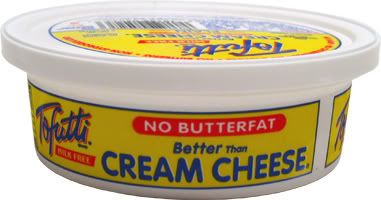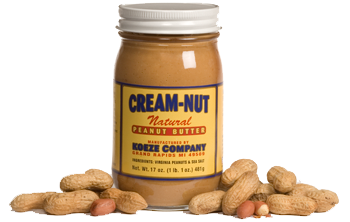This is an awesome website--->
Ecosalon.comApril 6, 2009 at 5:00 am by Tina McCarthy
The 10 Easiest Vegetables to Grow at Home
Thanks for dropping in! While you're here, you can subscribe for a convenient way to stay updated on all the latest green goodness. Or check out everyone's favorite posts. Thanks for stopping by!
Gardening is hot, hot, hot. And why not? Planting a few seeds on your deck or in your backyard yields delicious, organic results - and money savings, too. Besides, April is National Gardening Month! You know the basics of how to start your own vegetable garden, but where do you go from here? Here are some crops that even the least green thumbed among you can tackle, and tips on how to make them flourish.
tomato

Originating in South America, this plump red herbaceous perennial is rich in nutrients like niacin, potassium and phosphorous, antioxidants like lycopene, anthocyanin and carotene, and vitamins A, C and E. Tomatoes can add a juicy shot of flavor to a variety of dishes, such as salads, sandwiches and pasta.
After the last frost of winter has thawed, pick a spot in your yard that receives ample sunlight and test the soil’s pH level - you want between 6 and 7. (To increase the Ph level, add lime. To decrease it, add sulfur.) Spread compost over this area and mix it with the soil. Dig a hole for each seed, leaving at least a foot in between for growth, cover them and firmly pat down the soil. Water them with a spray bottle a couple times per week.
radish

Existing in shades of red, purple and white, these root vegetables were first cultivated thousands of years ago in Europe. Radishes are a great source of potassium, folic acid, magnesium and calcium, and are commonly used in salad dressings or as a garnish for salads.
Radishes thrive in soil with a pH level of around 6 or 7. Till a sunny patch in your garden and plant the seeds ½ inch below the soil’s surface with one inch of space between each. Water them lightly every couple days. Radishes are fast growers and should be ready to pull in several weeks. Don’t wait too long, or they’ll begin to deteriorate.
zucchini

In the late 1800s, spontaneous mutations of summer squashes yielded the first zucchini in Italy. Typically shaped like a cucumber, this yellow or green vegetable is low in calories and chop full of potassium, folate and manganese. Zucchini can be boiled, fried or steamed as a tasty side or stuffed and baked as a delectable entrée.
In a mound of composted soil a foot high and a couple feet wide, sow several zucchini seeds. Space each mound approximately 3 feet apart, water them heavily every other day and wait for them to sprout in a couple weeks. They should be ready to harvest about a month later.
beets

Evolving from wild plants in the Mediterranean, the beet, or beetroot, has a fleshy root that can be boiled and eaten plain, tossed in a salad or used to make borscht. Betaine, one of the primary nutrients in this deep red or purple vegetable, is known to improve cardiovascular health.
Clean and strengthen the seeds by soaking them in water at room temperature for a day. Plow the soil and remove any stones from the top 3 feet. Plant each seed 2 feet apart and water them at least once every day.
carrots

This biennial root vegetable was first domesticated during the 10th century in modern-day Afghanistan. Rich in vitamin A, antioxidants and dietary fiber, the carrot’s orange color is a result of the carotene it synthesizes when growing. Carrots are equally delicious as a healthy snack, in a side of steamed vegetables or even baked into a cake.
Leaving several inches in between holes, dig less than an inch deep and plant a couple of seeds in each. Make sure that the soil stays moist but remember to water the carrots less as they begin to reach maturity.
spinach

Early forms of this annual flowering plant were first found in the ancient world on the Indian subcontinent. High in both iron and calcium, this green leafy vegetable is eaten plain, cooked in a quiche, used as a pizza topping and made into a chip dip.
Turn over the soil with compost and plant seeds less than an inch deep, placing them at least 2 inches apart to give room for growth. Sow the soil a couple more times in the first month and keep this area well-watered.
peas

Dating back to the Neolithic Age in Jordan, Syria and Turkey, peas grow in the seed-pod of a legume. A good source of vitamins A, B and C, these small green spheres can be roasted for a tasty snack or thrown into stir-fries, casseroles and soups.
Cultivate the soil with nutrient-rich compost. Keep in mind that your soil must drain well in order for peas for flourish. Space each seed several inches apart and sow them one inch deep. Freshly planted seeds require ½ inch of water every week, while more mature plants need a full inch.
peppers

Native to Central and South America, these green, yellow, red or orange vegetables range in flavor from spicy to sweet. Containing nutrients like thiamin, folate and manganese, peppers can be stuffed with rice and meat or give salads, salsa and pasta a zesty kick.
Till the soil with both compost and Epsom salts, which will make it rich in magnesium to help the peppers develop healthily. Since they grow best in warm soil, sow the seeds a foot or more apart in raised beds. Water them frequently, keeping the soil moist, or they may taste bitter once harvested.
lettuce

Enjoyed in ancient Egypt as an aphrodisiac, lettuce is a good source of folic acid and vitamin A. Used as the primary ingredient in most salads, this green leaf vegetable, of which there are dozens of common varieties, can also be stuffed with various ingredients to make a lettuce wrap or top sandwiches, hamburgers and tacos.
When cultivating the soil with nutrient-rich compost, break up any chunks and remove debris. Make sure that seeds are planted between 8 and 16 inches apart and water them every morning. Avoid doing so at night because this could cause disease.
onion

Archaeologists have traced the first known onions back to the Bronze Age in early Palestinian settlements. Rich in dietary fiber, folate and vitamin C, these bulb-shaped vegetables add flavor to an assortment of foods, like dips, soups, salads, casseroles and much more.
Plow the soil a foot deep and get rid of debris. Use parasitic nematodes to prevent maggots and cutworms from destroying the crop. Plant the seeds a couple centimeters deep and several inches apart. Weed this area frequently but gently and provide them with about an inch of water every week.
P.S. Bring out that green thumb with
the complete guide to composting and
tips for healthy soil.
Images: Ron1478, Manjith Kainickara, clayirving, whitneybee, Nikki L., colorline, ms.Tea, Mzelle Biscotte, John of Austin, bcballard, Darwin Bell
Source: wikipedia
________________________________________________________

Peace
_________________________________________________________





















































